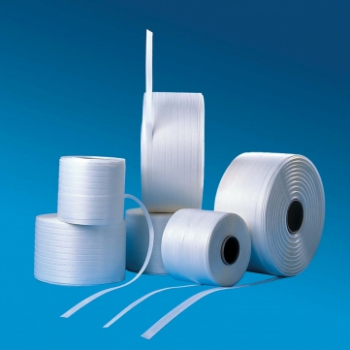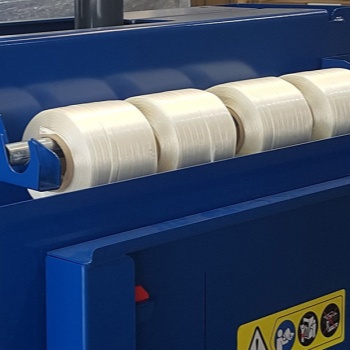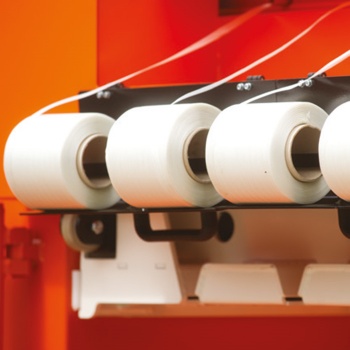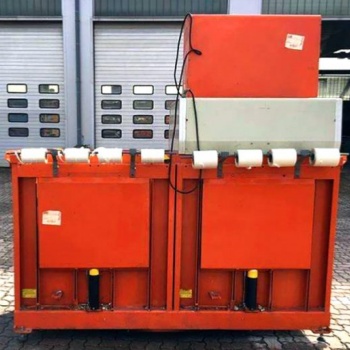The Role of Hotmelt Strap in Modern Waste Recycling and Baling Operations
As global awareness around environmental sustainability continues to grow, the waste recycling industry has become a vital part of modern infrastructure. Every day, recycling centers and waste management facilities process tons of paper, plastics, textiles, aluminum, and other recyclable materials. To efficiently handle and transport these materials, one essential element is often overlooked—the strapping used to compress and secure baled waste. Among the various options available today, the hotmelt strap has emerged as a leading solution, offering strength, safety, and operational efficiency.
Understanding Hotmelt Strap
Hotmelt strap is a type of polyester-based strapping manufactured using bonded fibers, joined together with a heat-activated adhesive. This non-woven structure provides a flat, smooth, and cohesive strapping solution that is ideal for compressing and securing baled recyclable materials. Unlike woven straps or steel bands, the hotmelt strap does not contain interlacing threads or sharp metal edges, making it safer and easier to handle.
This strap is widely used in conjunction with horizontal and vertical baling machines. It is compatible with both manual and automatic systems, making it highly adaptable to different scales of recycling operations—from small municipal centers to large industrial waste processing plants.


Why Hotmelt Strap Is Ideal for Recycling Applications
In the context of waste recycling and baling, the strapping used must withstand constant pressure, resist tearing, and endure the rough conditions associated with handling compressed materials. The hotmelt strap is particularly well-suited for this environment due to several key advantages:
-High Breaking Strength
Recycled materials are typically compressed into dense bales under high pressure. A strapping solution must be able to maintain its hold without snapping or slipping. Hotmelt straps are available in a wide range of tensile strengths, capable of securing bales of various weights—from light cartons to multi-ton compacted plastics or metals.
-Shock Resistance and Tension Retention
Transportation of bales often involves forklift handling, loading and unloading, and long-distance shipping. During these movements, vibration and impact are common. Hotmelt straps possess a degree of elongation and shock absorption that allows them to retain tension and keep the bales secure, even if the contents settle or shift during transit.
-Non-Corrosive and Weather-Resistant
Unlike steel strapping, which can corrode or rust when exposed to moisture, hotmelt strap is completely resistant to water and other environmental factors. This feature is particularly valuable in recycling yards where bales may be stored outdoors or in semi-covered areas. Whether exposed to rain, UV light, or varying temperatures, the integrity of the hotmelt strap remains intact.
-Ease of Handling and Worker Safety
Safety is a critical concern in recycling facilities, where workers frequently handle strapping tools and compressed materials. Steel strapping can cause injuries due to its sharp edges and tendency to spring back when cut. Hotmelt strap eliminates these risks. It is soft to the touch, has no sharp components, and does not snap dangerously under tension, significantly reducing workplace injuries.
-Compatibility with Baling Machines
Hotmelt strap is designed to be compatible with a wide variety of baling machines, both manual and automatic. Whether you're using a small-scale vertical baler for cardboard or a large horizontal baler for plastic bottles, the strap can be adapted for optimal performance. It can be cut to size and used with metal buckles or integrated with friction weld systems on fully automatic machines.
-Cost-Efficiency in Operations
Recycling centers are under pressure to keep operating costs low. Hotmelt strap offers a balance of affordability and durability. It is lighter and cheaper than steel strapping, yet strong enough to replace it in most applications. Additionally, its ease of use speeds up strapping procedures, improving productivity and reducing labor costs.
Common Applications in Waste Management
Hotmelt straps are used to secure a wide variety of recyclable bales:
-Paper and Cardboard
Perhaps the most common application of hotmelt straps is in securing bales of used paper, newspapers, and corrugated cardboard. These materials are lightweight but voluminous, and bundling them securely is essential for transport to paper mills.
-Plastics
PET bottles, HDPE containers, and shrink wrap are collected, sorted, and compressed into bales. These plastic bales can weigh several hundred kilograms and must be strapped tightly to maintain their shape during storage and shipment. Hotmelt straps with high breaking strength are ideal for this task.
-Textiles
Used clothing, fabric scraps, and industrial textile waste are compressed into blocks before being recycled or exported. Hotmelt straps can wrap around these materials without cutting or damaging them, while still maintaining strong pressure.
-Aluminum and Metal Cans
Although less common than other materials, aluminum recycling often involves baling beverage cans or sheet metal. These bales are heavier and require straps that can resist tearing from sharp edges. Hotmelt straps perform well in this scenario, especially when used with protective corner guards.
-Foam and EPS
Expanded polystyrene (EPS) or foam packaging materials are highly compressible and can rebound after pressure is removed. Hotmelt straps are elastic enough to keep constant tension and prevent bales from expanding or deforming.


Environmental Advantages
The use of hotmelt strap in recycling supports broader sustainability goals. Since the strap is made from polyester, it is recyclable and can be repurposed along with other synthetic materials. Using recyclable strapping reduces overall environmental impact and contributes to circular economy practices.
Additionally, because hotmelt strap is lighter and requires less energy to produce than metal alternatives, its carbon footprint is significantly lower. Many recycling companies choose hotmelt straps as part of their strategy to meet ESG (Environmental, Social, and Governance) targets.
Selecting the Right Hotmelt Strap for Your Operation
Choosing the appropriate hotmelt strap depends on several factors:
- Type of material being baled
- Size and weight of bales
- Strapping method (manual or automatic)
- Required breaking strength
- Storage and transport conditions
Most suppliers offer hotmelt straps in standard widths such as 13 mm, 16 mm, 19 mm, and 25 mm, with breaking strengths ranging from 250 kg to over 1,000 kg. It is important to match the strap’s specifications to the demands of your equipment and the materials you process.
Final Thoughts
In the waste recycling and baling industry, operational efficiency and safety go hand in hand with environmental responsibility. The hotmelt strap stands out as a modern strapping solution that aligns with all three of these priorities. It is durable enough for heavy bales, safe enough for frequent handling, and sustainable enough to support the planet.
For facilities looking to reduce costs, improve safety, and streamline baling operations, transitioning to hotmelt strap is a smart and forward-thinking move. Whether dealing with paper, plastics, metals, or textiles, the hotmelt strap offers reliable performance in even the most demanding recycling environments.